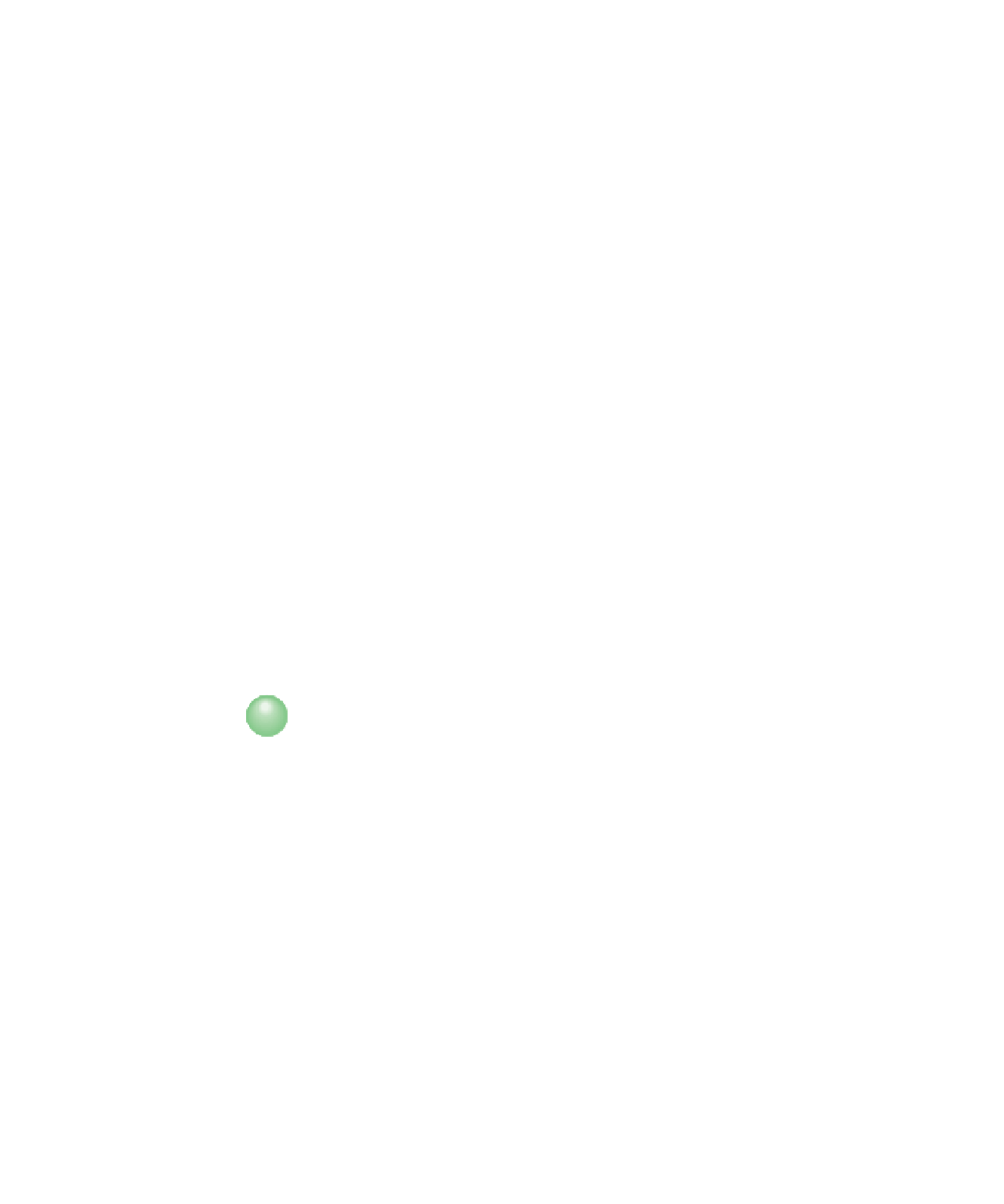Geology Reference
In-Depth Information
copious quantities of hydrogen chloride (HCl) gas that rises
into the stratosphere and which could be responsible for ozone
depletion. Furthermore, they claimed that because CFCs are
heavier than air, they would not rise into the stratosphere.
It is true that volcanoes release HCl gas, as well as several
other gases, some of which are quite dangerous. However,
most eruptions are too weak to inject gases of any kind high
into the stratosphere. Even when it is released, HCl gas from
volcanoes is very soluble and quickly removed from the at-
mosphere by rain and even by steam (water vapor) from the
same eruption that released HCl gas in the fi rst place. Mea-
surements of chlorine concentrations in the stratosphere
show that only temporary increases occur following huge
eruptions. For example, the largest volcanic outburst since
1912, the eruption of Mount Pinatubo in 1991, caused little
increase in upper atmospheric chlorine. The impact of vol-
canic eruptions is certainly not enough to cause the average
rate of ozone depletion taking place each year.
Although it is true that CFCs are heavier than air, this
does not mean that they cannot rise into the stratosphere.
Earth's surface heats differentially, meaning that more heat
may be absorbed in one area than in an adjacent one. The
heated air above a warmer area becomes less dense, rises by
convection, and carries with it CFCs and other substances that
are actually denser than air. Once in the stratosphere, ultravi-
olet radiation, which is usually absorbed by ozone, breaks up
CFC molecules and releases chlorine that reacts with ozone.
Indeed, a single chlorine atom can destroy 100,000 ozone
molecules (Figure 24.4). In contrast to the HCl gas produced
by volcanoes, CFCs are absolutely insoluble: it is the fact that
they are inert that made them so desirable for commercial
products. Because a CFC molecule can last for decades, any
increase in CFCs is a long-term threat to the ozone layer.
Another indication that CFCs are responsible for the
Antarctic ozone hole is that the rate of ozone depletion de-
creased since 1989 when an international agreement (the
Montreal Protocol) was implemented to reduce suspected
ozone-depleting substances. A sound understanding of the
science behind these atmospheric processes helped world
leaders act quickly to address this issue. Now, scientists hope
that with continued compliance with the Protocol, the ozone
layer will recover by the middle of this century.
Radon
is a colorless, odorless, naturally occurring radio-
active gas with a 3.8-day half-life. It is part of the uranium
238/lead 206 radioactive decay series in Figure 17.19 and occurs
in any rock or soil that contains uranium 238. Radon con-
centrations are reported in picocuries per liter (pCi/L) of air
(a curie is the standard measure of radiation, and a picocurie
is one-trillionth of a curie, or the equivalent of the decay of
about two radioactive atoms per minute). Outdoors, radon
escapes into the atmosphere where it is diluted and dissipates
to harmless levels (0.2 pCi/L is the ambient outdoor level
of radon). Radon levels for indoor air range from less than
1 pCi/L to about 3000 pCi/L, but average about 1.5 pCi/L. The
Environmental Protection Agency (EPA) considers radon lev-
els exceeding 4 pCi/L to be un-
healthy and recommends that
remedial action be taken to lower
them. Continued exposure to el-
evated levels of radon over an ex-
tended period of time is thought
by many researchers to increase
the risk of lung cancer.
Radon is one of the natural
decay products of uranium 238. It
rapidly decays by the emission of
an alpha particle, producing two
short-lived radioactive isotopes:
polonium 218 and polonium 214
(see Figure 17.19). Both isotopes
are solid and can become trapped
in your lungs every time you
breathe. When polonium decays,
it emits alpha and beta particles,
which can damage lung cells and
cause lung cancer.
Your chances of being ad-
versely affected by radon depend
on numerous interrelated factors
such as geographic location, the
geology of the area, the climate,
how buildings are constructed,
and the amount of time spent in
Ultraviolet light hits a chlorofluorocarbon
(CFC) molecule, such as CFCl
3
, breaking
off a chlorine atom and leaving CFCl
2
.
Sun
Cl
Cl
Once free, the chlorine atom is off
to attack another ozone molecule
and begin the cycle again.
C
Cl
F
UV radiation
Cl
Cl
O
O
The chlorine atom attacks
an ozone (O
3
) molecule, pulling
an oxygen atom off it
and leaving an oxygen
molecule (O
2
).
A free oxygen atom pulls
the oxygen atom off
the chlorine monoxide
molecule to form O
2
.
Cl
Cl
O
O
O
O
O
Cl
O
The chlorine atom and
the oxygen atom join to
form a chlorine monoxide
molecule (ClO).
O
O
◗
Figure 24.4
Ozone Depletion Ozone is destroyed by chlorofl uorocarbons (CFCs). Chlorine atoms
are continuously regenerated, so one chlorine atom can destroy many ozone molecules.





















Search WWH ::

Custom Search